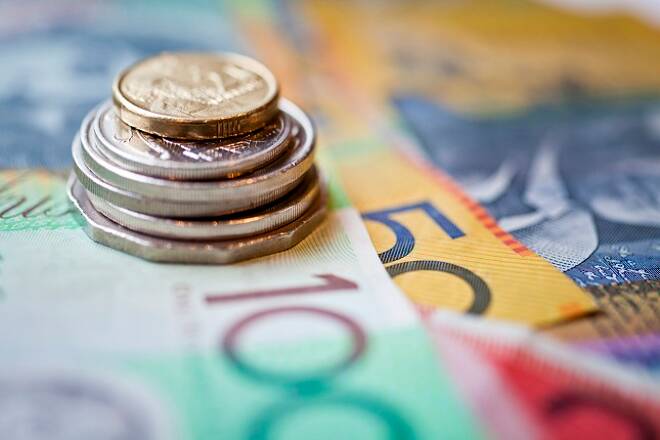Advertisement
Advertisement
AUD/USD and NZD/USD Fundamental Daily Forecast – Renewed Concerns Over Aggressive Fed Weighing on Aussie, Kiwi
By:
Both the Aussie and Kiwi have put up strong performances since early May, but it looks like the two currencies have run into technical resistance.
In this article:
The Australian and New Zealand Dollars are edging lower early Wednesday as firm U.S. Treasury yields underpinned the U.S. Dollar. Traders seem to be taking China’s lifting of COVID-19 restrictions in stride, while Aussie investors are shrugging off better-than-expected GDP data.
At 04:25 GMT, the AUD/USD is trading .7164, down 0.0013 or -0.19% and the NZD/USD is at .6485, down 0.0032 or -0.48%. On Tuesday, the Invesco CurrencyShares Australian Dollar Trust settled at $71.10, up $0.20 or +0.28%.
US Inflation Worries Underpin Treasurys, US Dollar
The Australian and New Zealand Dollars are down against its U.S. counterpart as volatile oil markets kept soaring inflation in focus and investors reacted to hawkish comments from a Federal Reserve official.
Federal Reserve policy was also a key concern for investors as U.S. President Joe Biden and Fed Chair Jerome Powell met on Tuesday to discuss inflation, which Biden said ahead of the meeting was his “top priority.”
The meeting took place after Fed Governor Christopher Waller said on Monday the U.S. central bank should be prepared to raise rates by a half percentage point at every meeting from now on until inflation is decisively curbed.
The Aussie and Kiwi soared against greenback the last two weeks as U.S. inflation and other economic indicators showed signs of peaking amid the Federal Reserve’s aggressive policy tightening.
Although the markets have priced half-point interest rate rises for the Fed’s meetings this month and next, in line with what policymakers have been signaling, but the outlook beyond that is unclear.
Australian GDP Beats Expectations, Supporting RBA Rate Hikes
Australia’s economy held up better than expected in the first quarter as strong domestic demand offset the drag from dismal weather and a flood of imports, setting the scene for more inflation-fighting hikes in interest rates.
Data from the Australian Bureau of Statistics out on Wednesday showed gross domestic product (GDP) rose 0.8% in the March quarter from the previous quarter, topping market forecasts of a 0.5% gain.
Daily Forecast
Both the Aussie and Kiwi have put up strong performances since early May, but it looks like the two currencies have run into technical resistance.
Short-covering usually fuels the first leg up following a prolonged sell-off. After this initial move, a market tends to retrace 50% – 61.8% of its first short-covering rally. We could be looking at the start of this correction. Real buyers could come in on this break, but if the target area fails to hold then we could see a retest of the May lows.
Fundamentally, the short-covering rally was fueled by rate hike expectations from the RBA and RBNZ, and the easing of concerns over the aggressiveness of the Fed.
Traders are expecting the RBA and RBNZ to raise rates in the upcoming months, but they are now concerned the Fed may have to maintain its aggressive policy stance beyond September. This new development is pushing Treasury yields higher and making the U.S. Dollar a more attractive asset.
For a look at all of today’s economic events, check out our economic calendar.
About the Author
James Hyerczykauthor
James is a Florida-based technical analyst, market researcher, educator and trader with 35+ years of experience. He is an expert in the area of patterns, price and time analysis as it applies to futures, Forex, and stocks.
Did you find this article useful?
Latest news and analysis
Advertisement
